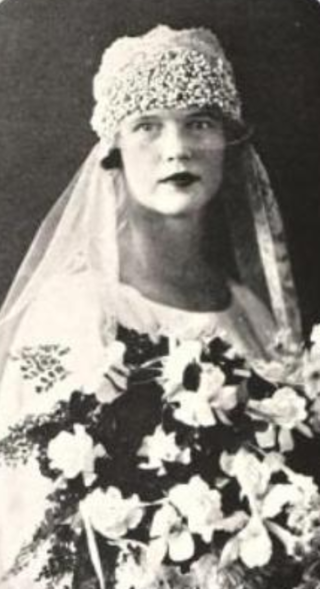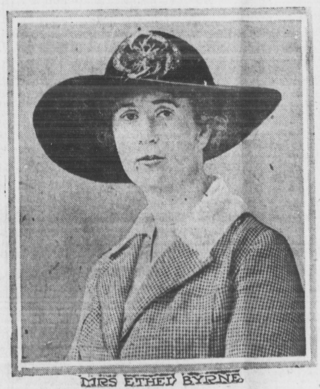Related Research Articles

Margaret Higgins Sanger, also known as Margaret Sanger Slee, was an American birth control activist, sex educator, writer, and nurse. Sanger popularized the term "birth control", opened the first birth control clinic in the United States, and established organizations that evolved into the Planned Parenthood Federation of America.

Where Are My Children? is a 1916 American silent drama film directed by Phillips Smalley and Lois Weber and stars Tyrone Power Sr., Juan de la Cruz, Helen Riaume, Marie Walcamp, Cora Drew, A.D. Blake, Rene Rogers, William Haben and C. Norman Hammond.

The Comstock laws are a set of federal acts passed by the United States Congress under the Grant administration along with related state laws. The "parent" act was passed on March 3, 1873, as the Act for the Suppression of Trade in, and Circulation of, Obscene Literature and Articles of Immoral Use. This Act criminalized any use of the U.S. Postal Service to send any of the following items: obscenity, contraceptives, abortifacients, sex toys, personal letters with any sexual content or information, or any information regarding the above items.

Anthony Comstock was an anti-vice activist, United States Postal Inspector, and secretary of the New York Society for the Suppression of Vice (NYSSV), who was dedicated to upholding Christian morality. He opposed obscene literature, abortion, contraception, masturbation, gambling, prostitution, and patent medicine. The terms comstockery and comstockism refer to his extensive censorship campaign of materials that he considered obscene, namely anything remotely discussing sex publicly, including birth control advertised or sent by mail. He used his positions in the U.S. Postal Service and the NYSSV to make numerous arrests for obscenity and gambling.

Oliver Hazard Perry Belmont was an American banker, socialite, and politician who served one term as a United States Representative from New York from 1901 to 1903.

Mary Coffin Ware Dennett was an American women's rights activist, pacifist, homeopathic advocate, and pioneer in the areas of birth control, sex education, and women's suffrage. She co-founded the National Birth Control League in 1915 together with Jessie Ashley and Clara Gruening Stillman. She founded the Voluntary Parenthood League, served in the National American Women's Suffrage Association, co-founded the Twilight Sleep Association, and wrote a famous pamphlet on sex education and birth control. A famous legal case against her eventually became the catalyst for overturning the Comstock laws.

Muriel Vanderbilt was an American socialite and a thoroughbred racehorse owner/breeder who was a member of the wealthy Vanderbilt family.

George Lockhart Rives, was an American lawyer, politician, and author who served as United States Assistant Secretary of State from 1887 to 1889.
The Hand That Rocks the Cradle is an American silent drama film released in 1917. It was written, produced and directed by the husband and wife team Phillips Smalley and Lois Weber, who also play the lead roles. It was made in Hollywood under the working title Is a Woman a Person?

The womb veil was a 19th-century American form of barrier contraception consisting of an occlusive pessary, i.e. a device inserted into the vagina to block access of the sperm into the uterus. Made of rubber, it was a forerunner to the modern diaphragm and cervical cap. The name was first used by Edward Bliss Foote in 1863 for the device he designed and marketed. "Womb veil" became the most common 19th-century American term for similar devices, and continued to be used into the early 20th century. Womb veils were among a "range of contraceptive technology of questionable efficacy" available to American women of the 19th century, forms of which began to be advertised in the 1830s and 1840s. They could be bought widely through mail-order catalogues; when induced abortion was criminalized during the 1870s, reliance on birth control increased. Womb veils were touted as a discreet form of contraception, with one catalogue of erotic products from the 1860s promising that they could be "used by the female without danger of detection by the male."

The birth control movement in the United States was a social reform campaign beginning in 1914 that aimed to increase the availability of contraception in the U.S. through education and legalization. The movement began in 1914 when a group of political radicals in New York City, led by Emma Goldman, Mary Dennett, and Margaret Sanger, became concerned about the hardships that childbirth and self-induced abortions brought to low-income women. Since contraception was considered to be obscene at the time, the activists targeted the Comstock laws, which prohibited distribution of any "obscene, lewd, and/or lascivious" materials through the mail. Hoping to provoke a favorable legal decision, Sanger deliberately broke the law by distributing The Woman Rebel, a newsletter containing a discussion of contraception. In 1916, Sanger opened the first birth control clinic in the United States, but the clinic was immediately shut down by police, and Sanger was sentenced to 30 days in jail.

Birth control in the United States is available in many forms. Some of the forms available at drugstores and some retail stores are male condoms, female condoms, sponges, spermicides, and over-the-counter emergency contraception. Forms available at pharmacies with a doctor's prescription or at doctor's offices are oral contraceptive pills, patches, vaginal rings, diaphragms, shots/injections, cervical caps, implantable rods, and intrauterine devices (IUDs). Sterilization procedures, including tubal ligations and vasectomies, are also performed.

Birth Control Review was a lay magazine established and edited by Margaret Sanger in 1917, three years after her friend, Otto Bobsein, coined the term "birth control" to describe voluntary motherhood or the ability of a woman to space children "in keeping with a family's financial and health resources." Sanger published the first issue while imprisoned with Ethel Byrne, her sister, and Fannie Mindell for giving contraceptives and instruction to poor women at the Brownsville Clinic in New York. Sanger remained editor-in-chief until 1928, when she turned it over to the American Birth Control League. The last issue was published in January 1940.
The first large-scale human trial of the birth control pill was conducted by Gregory Pincus and John Rock in 1955 in Puerto Rico. Before the drug was approved as safe in the mainland U.S., many Puerto Rican women were used as test subjects. These trials are a major component in the history of the development of female oral contraceptives, occurring in between initial small trial testing on the east coast and the release of the drug for public consumption. As a result, women gained more independence as they were able to delay pregnancies. There is a lot of controversy surrounding these trials as Puerto Rican women were uninformed of the consequences of this trial. There was a large amount of criticism coming from feminist circles surrounding the trial.

Ethel Byrne was an American Progressive Era radical feminist. She was the younger sister of birth control activist Margaret Sanger, and assisted her in this work.

Mariette Leslie Cotton (1866–1947) was an American artist who usually gave her name as Mrs. Leslie Cotton. A student of William Merritt Chase, Carolus-Duran, and Jean-Jacques Henner, she worked mainly in Paris but also maintained studios in London and New York. By birth and marriage she possessed a level of wealth and social prestige that, together with her artistic skill, enabled her to obtain lucrative commissions from prominent individuals. The portraits she painted were praised for their veracity, style, and fine technique. Their subjects included kings, aristocrats, celebrities, and members of wealthy families. Late in her career a critic wrote that her "popularity has a sound basis, for her portraits combine such abstract artistic qualities as effective and infinitely varied design and daringly unconventional arrangements of color, with strong characterization and a likeness that never fails to be convincing," and added, "her concern with the artistic problem never makes her obtrude her own personality or offend the sitter's susceptibilities."

A Girl of the Limberlost is a 1934 American drama film, directed by Christy Cabanne. It stars Louise Dresser, Ralph Morgan and Marian Marsh, and was released on October 15, 1934. This is the second film adaption of Gene Stratton-Porter's 1909 novel of the same name. The first film adaptation had been released in 1924, and a third was released in 1945.
Family Limitation is a pamphlet written by American family planning activist, eugenicist, educator, writer, and nurse Margaret Sanger that was published in 1914. It was one of the first guides to birth control published in the United States. The 16-page pamphlet details information on, and ingredients for, various contraceptive methods and included illustrations and instructions for use. After the pamphlet was released, Sanger was forced to flee the United States to Britain to avoid prosecution under federal anti-obscenity laws, the Comstock Act, which prohibited disseminating information about contraception.
Orphan Train is an American TV movie directed by William Graham which was broadcast on CBS on December 22, 1979.
Gertrude Aldredge Shelburne (1907-1993) was an activist, philanthropist, and supporter of contraceptive rights from Dallas, Texas. She was a member of the women's rights movement in Texas in the 1930s and '40s.
References
- ↑ 4. Black Market Birth Control: Contraceptive Entrepreneurship and Criminality in the Gilded Age
- ↑ 1850 Federal census; Nanticoke, Broome, New York
- ↑ CHASE, MRS. SARAH BLAKELEE - Biographies - History of Homeopathy - Presented by Sylvain Cazalet
- ↑ 1850 Federal Census Nanticoke, Broome, New York.
- ↑ http://sueyounghistories.com.archives/2008/02/01/sarah-blakesley-chase-and-homeopathy/ [ dead link ]
- ↑ The Evening World (New York) 31 May 1893 "Sara B. Chase On The Stand"
- ↑ The New York Times 31 Dec 1878, pg2
- ↑ The Philadelphia Inquirer 5 Dec 1888 "Queer Wedding and Courtship"
- ↑ 5. They Married Themselves. New York Times (8157-1922) [New York, N.Y] 05 Dec 1888:8.
- ↑ Black Market Birth Control: Contraceptive Entrepreneurship and Criminality in the Gilded Age
- ↑ The New York Times 31 Dec 1878, pg 2
- ↑ "Ohio News". Pittsburgh Commercial Gazette. 31 Dec 1878. p. 2.
Dr. Hazard D. Chase has been divorced from his wife, Dr. Sara B. Chase.
- ↑ Dr. Sara B. Chase sued for Divorce. New York (1857-1922) [New York, N.Y] Dec 16 1878: 1.
- ↑ The New York Herald, August 8, 1889
- ↑ 1910 Federal census; District 0065, Kansas City Ward 5, Jackson, Missouri